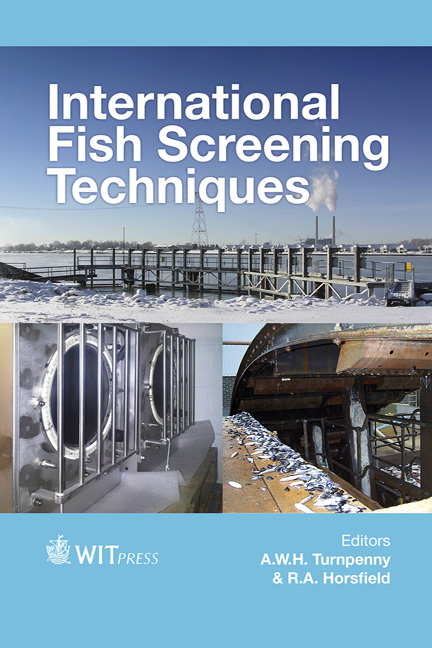UK Best Practice Fish Screening Trials Study
Price
Free (open access)
Volume
71
Pages
12
Published
2014
Size
1,002 kb
Paper DOI
10.2495/978-1-84564-849-7/08
Copyright
WIT Press
Author(s)
R. Bromley, S. Coyle, K. Hawley, K. Anderson & A. W. H. Turnpenny
Abstract
The testing of two types of fish screens; passive wedge wire cylinder screens and travelling screens, was undertaken in the lower River Thames, UK. This work was part of a bigger study jointly commissioned by Thames Water Utilities Ltd and Veolia Water Central Ltd (formerly Three Valleys Water plc) as part of their AMP4 business plan to investigate and assess entrainment and test screening solutions. The testing of the selected fish screens provides an update and supplement to the Environment Agency’s ‘Screening for Intakes and Outfalls: a best practice guide’. The aims of the screening study were to provide a better estimate of the rate of fish fry entrainment at water intake sites and to assess the impacts in population terms using the Equivalent Adult Value method (an empirical estimate equating the loss of fry in adult terms). In the course of producing this assessment, a review of the River Thames standing stock populations and the construction of species lifetables, was undertaken. It is estimated that the number of fry entrained during 2007 at all intake sites could have amounted to 31% of the total adult stock in the lower Thames in Equivalent Adult terms. With the introduction of the best performing screens on test in this study the percentage of adult equivalents entrained would be less than 6% of the standing stock, an improvement of 25%. Keywords: fish screening, passive wedge wire screens, travelling screens, entrainment, intakes, equivalent adult value, water abstraction.
Keywords
fish screening, passive wedge wire screens, travelling screens, entrainment, intakes, equivalent adult value, water abstraction.





